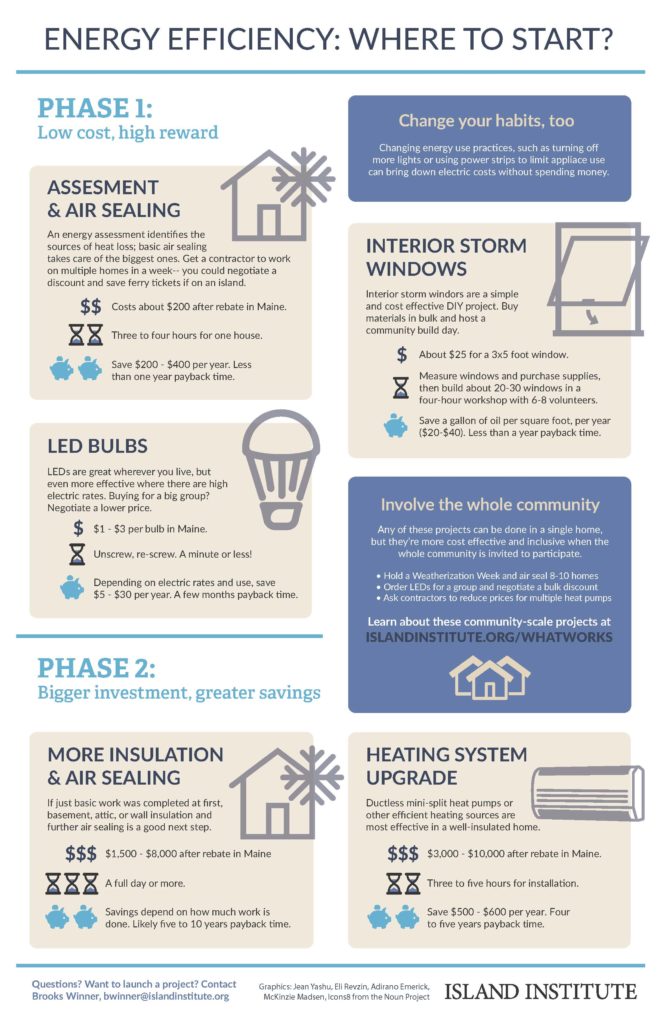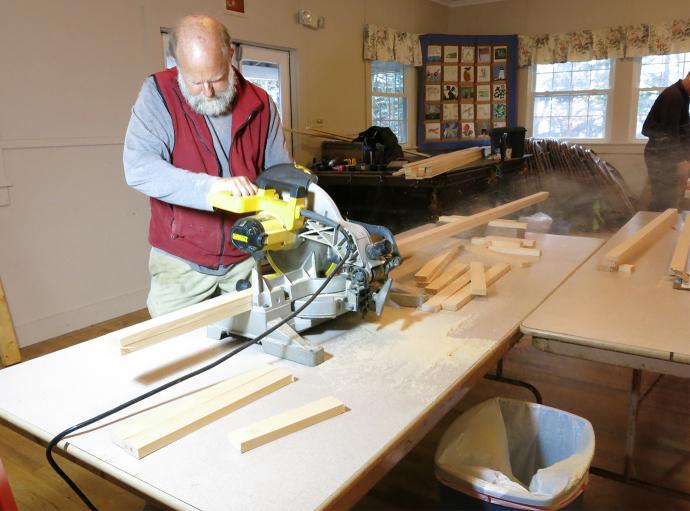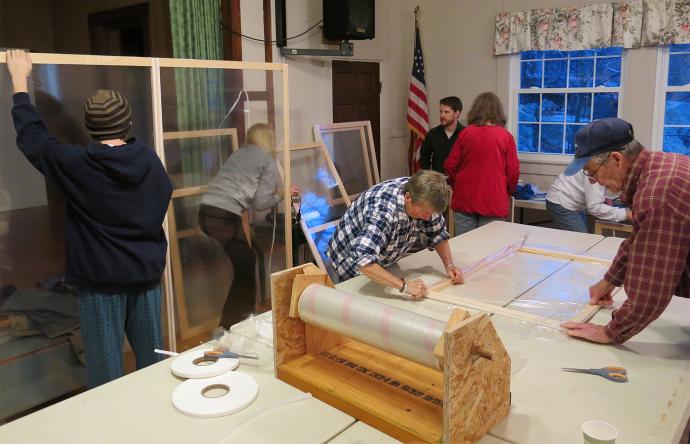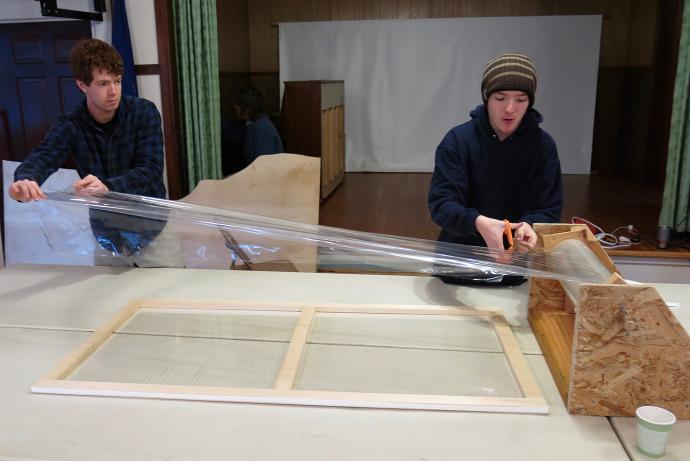HOW IT WORKS
While it makes sense to pay a contractor to complete weatherization work like air sealing (and take advantage of the rebate), sealing and insulating leaky windows for the winter can be easily completed with inexpensive materials and a few friends. With a few basic tools (think: electric drill, saw) you can build window inserts to keep your house warmer and save hundreds of dollars per year, for a fraction of the price of buying and installing brand new windows. Since it’s easiest and cheapest to buy materials like shrink-wrap and double-sided foam tape in bulk, and much faster with a group of people, a community-wide window-building day works very well. The Island Institute has hosted 20 workshops on 13 islands, and more are planned. Several island organizations have begun hosting their own building workshops.
IMPLEMENTATION STEPS
- Spread news in your community about the windows, their cost, potential savings, and benefits of working together.
- Collect measurements for all windows. You may wish to have a few people do this who are very accurate, or use a laser measure to make sure the windows fit in the end! Directions in step 5.
- Purchase materials. Information about sourcing materials available here: Interior Storm Windows – Materials list and sourcing
- Host a community build day and invite all participants. You can expect to build 25 or 30 windows in four hours with a group of 8-10 volunteers.
- Follow these instructions for building windows: Interior Storm Window Directions
- Pop windows into place, and enjoy the heat!
- Next spring, find a space where they can be stored horizontally (to prevent warping) and won’t be punctured over the summer. They can last many years if taken care of.
Q&A WITH ENERGY TEAM
How many windows can you build in a day?
That depends on the number of volunteers! but in general, approximately 30 windows can be constructed in a four hour span with a focused group of folks.
Do they look weird or block the view out of your window?
“Weird” is in the eye of the beholder. The windows do have a double coat of plastic film that can make views appear slightly shimmery as you look through. The frames are constructed of pine boards free of knots, and do not detract from your view.
Should I make inserts for all my windows? If not, which ones?
If your budget supports it, almost any window would be enhanced by an insert. However, if this is outside your budget, then these criteria should guide your decision:
Window quality: do you have single pane glass windows? Do you have any windows that lack storm windows? These are likely your best choice for maximizing impact with an insert.
Comfort: do you have windows in your home that are predictably chilly? Perhaps a bathroom window, or the window above your kitchen sink or couch? Windows that you spend an above average amount of time near, should be your first priority.
If you were/will be a Weatherization Week participant: building professionals have the tools to tell which windows need help most. If you have been weatherized in the past, recall if your contractor pointed out particularly leaky windows during his or her audit with the infrared camera. If you have not yet had your home weatherized, but plan to join a future Week, make a point of asking the contractor which windows should be prioritized during your walk through.
What are some common mistakes to avoid?
Because they are constructed of plastic coating, inserts are very vulnerable to scratching cats or small children (the plastic is very tempting to poke little fingers into). So, it is important to think about where your pets or small kids will be able to access as you choose which windows to build. Another mistake is skipping over the newer windows in your home as you choose which ones to construct. New windows can benefit from inserts more often than not – so windows should be selected with an eye to comfort and convenience. Remember to store your storm windows flat in a safe place (attics and dry basements work quite well). If they are stored upright or leaning, they will warp and may not fit next year!
Any tips for success?
- It’s helpful to have a chop saw to cut boards. They can be done by hand but it will take a really long time!
- Buy extra wood in case you make mistakes and need to redo a piece (if not, make an extra window or two for a community building!)
- Plan early. We usually put fliers out 6 weeks before deadline for measurements. Then allow 2 or three weeks to order and transport wood. It ought to be an 8-9 week process.
- Make it clear to participants that it costs money– but also that their money will be repaid by fuel savings in one winter.
- For those who have a hard time paying, it’s a great investment for a fuel assistance fund or sustainable housing money.
- It’s really important to get recipients of windows to show up and help build, both because it goes faster with more hands, and because it’s a good gateway to further weatherization and efficiency work.
CHALLENGES
- Measuring windows accurately. Island Institute can loan a laser measure. Otherwise try to have one or two people do all the measuring to make sure they do a good job.
- Attention to detail is necessary to cut wood accurately, stretch the plastic well, and place the tape. Sloppy work means windows that don’t fit or aren’t as effective.
- The windows are difficult to store as they have to be flat and not punctured. Perhaps it would be possible to locate a community building for summer storage?
OUTCOMES / RESULTS
Interior storm windows usually save about 0.93 gallons of fuel oil per square foot every year. With heating oil at $3.00/gallon, and an average window size of 15 square feet, that’s more than $40/year for each window insert.
ADDITIONAL RESOURCES
Materials list:
Interior Storm Windows – Materials list and sourcing

Originally Published March 2016




